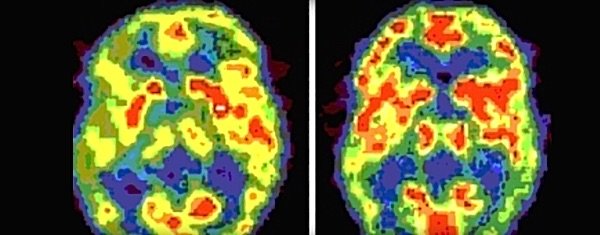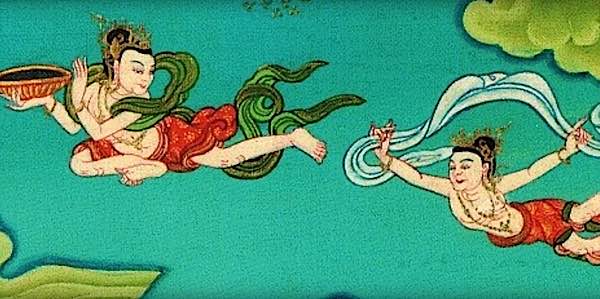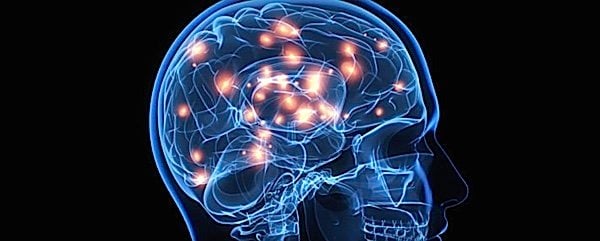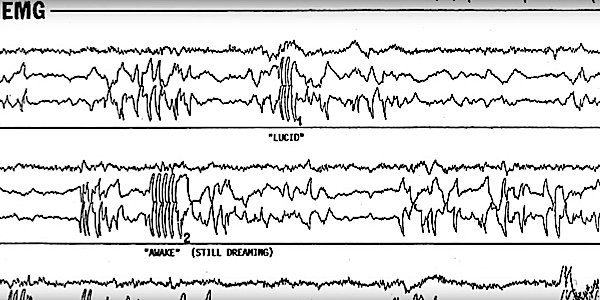Is it easier to practice Buddhist meditations in our dreams? Enlightenment through Dream Yoga, is it possible?
“You should know all phenomena are like dreams.” — Shakyamuni Buddha.
Unless we are Yogis or Yoginis, the closest we are likely to come to an inciteful appreciation of Emptiness and the true nature of phenomenon might actually be our dreams. The first Karmapa attained Enlightenment with Dream Yoga.

The conflicted “daytime” mind — so wound up in our worries, stresses, and fears — is as difficult to tame as a wild horse that has lived for years in the mountains. The nighttime mind, on the other hand, deeply entranced in Theta state (REM), can be almost as pliable and free as a Yogi’s mind.
“It is easier to develop your practices in a dream than in the daytime. In the daytime, we are limited to our material body, but in a dream our function of mind and our consciousness of the senses are unhindered. We can have more clarity… If a person applies a practice within a dream, it is nine times more effective than when it is applied in waking life.” — Namkai Norbu Rinpoche
During REM brain activity increases
During REM sleep, in EEGs (Electroencephalograms) of brain activity, the brain is actually substantially more active than during daytime waking time. In part, this is because the mind is literally freed of mundane, repetitive habitual activities, and focused entirely on mind — much as we aspire to achieve in some forms of sitting (awake) meditation. All activities take place in mind. Tibetan Buddhists, for centuries, recognized this important mental activity as a time to really empower practice and developed Milam Sleep Yoga to facilitate lucid dreaming. [See the mini How-To at end of this feature and suggestions throughout.]

Many sutras give different examples of Buddha’s statement, using metaphors like clouds and rainbows to illustrate the illusion of phenomena. The concept is so important it is a major part of Lojong Seven Point Mind Training. Slogan Two in the Lojong text says: “Regard all dharmas as dreams; although experiences may seem solid, they are passing memories.” [For a story on Lojong Seven-Point Mind Training, visit>>]
“The first step to dream practice is quite simple: one must recognize the great potential that dream holds for the spiritual journey. Normally, the dream is thought to be ‘unreal,’ as opposed to ‘real’ waking life. But there is nothing more real than dream. This statement only makes sense once it is understood that normal waking life is as unreal as dream, and in exactly the same. way.” — Tenzin Wangyal Rinpoche, The Tibetan Yogas of Dream and Sleep

The waking mind is a busy mind, and even with Lojong Mind Training, analysis only takes our understanding of phenomenon so far. Even a full hour of mindfully watching our busy thoughts — and attaining near perfect calm mind in seated meditation — can’t come close to the open and “Empty” state of mind of the dreamer. A few minutes of lucid dream yoga in the altered state of sleep brings us as close as most of us “ordinary mortals” are going to get to the what the great Yogis and Yoginis experienced after years in their lonely mountain caves. [Note: See some interesting teaching videos on Tibetan Dream Yoga below in this feature.]

Buddhist Dream Yoga or Lucid Dreaming for the purpose of Dharma practice is particularly effective in helping us understand the true nature of reality. It can really liberate your meditation, particularly since we spend more time sleeping than in any other “activity.”
“Form is Emptiness; Emptiness is Form”
Dream Yoga is a “pure state of mind”, where anything becomes possible. Thoughtforms appear real. As we master lucid dreaming, we begin to understand the Heart Sutra:
The other four aspects of human existence —
feeling, thought, will, and consciousness —
are likewise nothing more than emptiness,
and emptiness nothing more than they.

Classically, in Tibetan Buddhist practice, Dream Yoga is also important as preparation for Death. If we understand that even Death is illusory, we can feel less fear. If we can understand that life is impermanent, and dependent arising, we feel strongly motivated to practice now, while we have this precious awareness.
“If we cannot carry our practice into sleep,” wrote Tenzin Wangyal Rinpoche, in The Tibetan Yogas of Dream and Sleep, “if we lose ourselves every night, what chance do we have to be aware when death comes? Look to your experience in dreams to know how you will fare in death. Look to your experience of sleep to discover whether or not you are truly awake.”

Sleep Yoga: using “Theta” mind to advance

A key indicator of meditation success is to attain “Theta mind” — the brain waves (4.7-5Hz) typically associated with either deep meditative state, or sleep in the dream state. Most of us ordinary mortals, in seated waking-meditation — even after an hour of deep calm-abiding practice — can move out of “Alpha” brain wave (7.5-12Hz). Most of us will come close to the 7.5Hz end of the spectrum with years of practice — the brain wave frequency associated with “intuition” — but any lower than that escapes the waking mind (unless you are an advanced Yogi or Yogini.)
Today, we don’t have the luxury of leaving our families and jobs behind for years for a retreat in the mountains. Many teachers say we should engage in a full retreat at least once in our lives; most of us, if we can do it at all, will wait for our retirement.
But, when we sleep, our minds create entire worlds within seconds, a century can pass in a relative minute, we can fly through the sky and meet Buddhas and stunningly beautiful Dakinis, we see monsters from the deepest fictional hells of our mind — and none of it is real. Yet, all of it is as real as we experience in our daily lives.
Lucid participation in your dreams can quickly help us develop insight into duality, into the true nature of phenomena, into the illusion of appearances in our dualistic “waking” world.
Sleep Yoga: ideal meditation for modern life
Lucid dreaming, as an actual practice in Buddhism, is called “Sleep Yoga” or svapnadarshana (Tib. milam), “The Yoga of the Dream State.” In Vajrayana, although we practice sitting meditation, mindfulness and calm-abiding meditations — we also strongly focus on visualized meditations. Vajrayana is considered the “lightning path” to realizations, largely because it adds this dimension of visualized practice — often called Deity Yoga — which helps us understand the true nature of reality and the illusion of dualistic phenomenon. It is also the easiest way to develop some insights into the important concept of Shunyata (Emptiness) — especially in the modern world.

Yet, in apparent contradiction, the extraordinary stresses of contemporary life make it difficult to settle our busy minds enough to have truly intense visualizations. Our progress can slow or stall because of it, although years of practice will eventually bring some realizations.
Sleep Yoga (milam, rmi-lam, nyilam) or lucid dreaming practice, could be the “lightning path” within the “lightning path.” By moving some of our practice to the “Theta Mind” dreaming, insights into the nature of reality are easier to grasp. Experiencing the “illusion” is more impactful than analyzing it logically with the waking mind.
A short and informative video from Andrew Holecek, author of Dream Yoga: Illuminating Your Life Through Lucid Dreaming and the Tibetan Yogas of Sleep:
Dream Yoga: What Can We Achieve?
In a word — Anything. We can achieve anything in lucid dreaming — once we have mastered the method — because we control what we feel, see, do, and all phenomenon in the dream. If we have mastery, we can snap our fingers and create a wall of fire. It’s a fantasy dream.
But why do it? Firstly, as Andrew Holecek explains in his book Dream Yoga: Illuminating Your Life Through Lucid Dream, “We spend more time in bed than any other single place, dead to the outer world, but potentially alive to an exciting inner world.”
Just for the sake of lucidly dreaming, it is nothing more than another form of attachment, another Samsaric activity for enjoyment — Dream TV channel. To make it Dharma practice, after we’ve started mastering the lucid control of the dream, our Dharma activities can include:
- Realizations on Shunyata (at least improve our understanding): Seeing for ourselves the illusory nature of phenomena and developing a deep understanding of the teachings in the Heart Sutra [For a feature story and commentary on Heart Sutra, please see>>]
- Practising sadhanas (meditation practices): Who doesn’t run out time for daily meditation? And, even if we have time, can we really get into the receptive, open, empty state of mind needed to make progress? Once we have control of lucid dreaming we can actually practice sadhanas in the state of “Theta” — suddenly, our visualizations not only appear alive, they move and talk. (Obviously, it’s important to first have a qualified teacher who coaches you on deity visualization and dream yoga.)
- Preparing for Death: as with many Buddhist practices, we meditate on death to understand impermanence and motivate practice. In Dream Yoga, we go one step further. We use the method to actually prepare for death. Dreaming state is as close to “Bardo” or immediate death state as its possible to achieve while still alive — with the exception of actually Near Death Experiences (NDE).
- Receiving teachings For the masters of the method, it is said you can receive initiations, empowerments and transmissions from teachers (not only your own teacher, but remote teachers you’ve never met, and even deceased teachers — since time is just another phenomenon.)
- Pilgrimages: Imagine finally having time to take Pilgrimage to Holy Places. This meritorious activity not only is possible, it’s possible with the speed of thought. You can visit any place, or even time, instantly. Travel between worlds, centuries or cities. It doesn’t matter that this is illusory. You develop merit from Pilgrimage and help to increase your understanding of Shunyata at the same time.
- Developing Metta and Compassion: In your dreams, you can visit many sentient beings. In your dreams, non-human sentient beings can communicate. Imagine the boundless compassion you can develop by meeting so many beings, even if they are dream beings.
Lest we get lost in all the fantasy — or worry that it’s ruining our practice — it’s probably important to emphasise again: understanding that phenomena are ultimately illusory is the one of the main points.
Marpa and Milarepa: Six Stages of Dream Yoga
There are different lineages and methods taught over the centuries by Vajrayana Buddhist teachers, but you could say the practice breaks down into six stages or phases, based on teachings from the great Marpa and Milarepa:
- Instructions in lucid dreaming: in formal practice normally initiations, instructions, and meditations precede practice.
- The teacher explains how the dreamer should not fear anything in a dream, that all is an illusion, that even things that appear harmful can be tamed by us, and how to do it.
- Coming to understand that dream phenomena and “waking” phenomena are both dependent on mind and nothing but illusions. “Without the perceiver, there is no perceived.” Both waking and dream phenomenon is dependent arising — therefore they are Empty of independent existence.
- Realise we are in control of our dreams — practice changing objects from one thing into another.
- Understand that our own dream body (as we see/feel it in our dream) is no more real than our waking life body. We should realise we are not that illusory body, but something beyond that.
- We then, understanding Emptiness, visualise perfect Buddhas, Bodhisattvas and Dakinis while in the lucid dreaming state — which is much more vivid and living and detailed than they appear typically in our waking visualisations during Deity Yoga. We then rest in the clear light of Emptiness.
It is said that the great practitioners of Dream Yoga can visit each other, not just living Masters, but their teachers in the past or future — and that both the dreamer and the recipient remember the meeting and teaching.

How to Learn Dream Yoga
Formally, in Tibetan method, you should receive teachings and possibly empowerment from a qualified lineage teacher — and that will normally only follow Ngondro (or Foundation) practices. These are important to prepare the mind for this important and profound practice.
But, until that time, you can practice lucid dreaming, getting yourself ready for the time when you begin formal practice. The basic steps to developing Lucid Dreaming are:
- First practice dream recollection: Don’t worry about control or lucidity in the dream, focus on always remembering your dreams. Go to bed with the intention of remembering, keep a dream journal, and if you wake up from a dream, close your eyes immediately to help you remember. (Several studies indicate that the “light” stimulation when we open our eyes is the main reason we forget dreams.)
- “Stress and tension taken to bed will follow the sleeper, into sleep. Therefore, bring the mind into rigpa if possible,” before sleep — Tenzin Wangyal Rinpoche
- Chant mantras from your personal practice as you start to fall asleep. This will relax you, set your intension, and put you in a spiritual state-of-mind.
- Consciously affirm to yourself as you go to bed that you will remember and lucidly participate in your dreams. Ultimately, you should also affirm you will “control” your dreams (rather than passively participate.)
- Learn to recognize the signs you are lucidly dreaming. One sign, for example, would be seeing a dead relative, friend or teacher. Look around you and find details that are indicators you in dream state.
- If you wake up from a dream, remain in the relaxed state — keep your eyes closed — affirm you were dreaming, then try to re-enter the dream, this time lucidly, while still close to the Theta state (at this time you would be in a relaxed form of Alpha state, but could easily slip back into Theta.)
- The great Tibetan Yogis and teachers always recommend sleeping on the right side, the same posture Shakyamuni Buddha manifested when he passed away into Paranirvana.
- You can try some of the “guided” audio meditations designed to induce lucid dreaming, or you can record your own, where you repeat over and over “I will have a lucid dream, I will have a lucid dream…”
- After you develop some dream recall, try guiding your dreaming by falling asleep with an image in mind. As with any meditation, focus intensely on the visualization as you drift off to sleep.
- If you have a deity practice, with initiation to self-generate, it can be helpful to visualize the self as deity just before sleep, and your bedroom as a Pure Land. Having this positive image can lead to a positive dream experience.
- If you have initiation, try practising the Sleep and Waking Yogas of Vajrayogini or other meditations with this practice — as instructed by your teacher, of course.

There are a number of techniques classically used for this: dream journals by your bedside for when you first wake up — write down your dream recollections before the waking mind wipes out the gain.
Tips for Difficult Dreamers
Incorporating all the elements above, there are some key points that are musts for good lucid dreaming. First is motivation. As with any Buddhist practice, you should set your motivation, and also affirm your goal: “I intend to participate in lucid dreaming for the purpose of expanding my practice and with the intention of benefiting all sentient beings.” Or, whatever you intention is.
Important Tip: Remember the goal is not just to know you are lucid, but ultimately to be able to control or transform your dream. You should have complete power in your dreams.
Secondly, if you have trouble lucidly dreaming, try setting your mental clock to two hours before you normally wake up. “I will become aware I am lucidly dreaming at 4 am this morning.” In the same way this works for people who want to remind themselves to wake up by 6 am for a meeting, this sort of intention/reminder actually does seem to work.

If you wake up, recalling a dream, immediately press your eyes closed, reaffirm your intention, and drift back into sleep. Typically, people who wake up from a dream, then go back to sleep, are more likely to either lucid dream, or clearly remember their dream. There is also a “Theta” zone, when you are still thick with dream/sleep right after you wake, that you can exploit. Try guiding your own visualization of your practice while in this state, being careful not to “wake up” — keep your mind peaceful and sleepy. You may find your visualizations, even though you are somewhat awake, are more vivid than you can achieve in traditional “waking” practice.

If you have significant difficulties, you can try various other tactics such REM dream goggles (which flash while you sleep so subtly they register in your dreams, helping remind you you are awake in the dreams), guided sleep meditations on audio recordings, even recordings of shaman drumming before you sleep (which creates a frequency which helps induce Theta.)
The most effective method is to combine Sleep Yoga with Dream Yoga. Sleep Yoga basically involves visualising yourself as Yidam, then falling asleep with that image. Alternately, in non-Vajrayana practice, you can do mindfulness meditation in bed as you go to sleep. Allow yourself to naturally fall asleep, and watch the process of mind going to sleep as it happens.
Technical Tip: Avoid sleep aids, other than natural ones. Sleeping pills prevent dreaming.
Formal Dream Yoga
As taught in commentaries by Gyatrul Rinpoche and others, the formal steps of practice — which require teacher guidance — are:
- Apprehension: understanding and seeing dreams
- Transformation: controlling the dreams and all forms, images, experiences
- Absorption of unifications: (but we will leave this to a teacher to describe.)
For formal dream yoga, it is best to seek out a qualified teacher of lineage. There are a number of books on the practice, but ultimately, the higher teachings of Dream Yoga are best transmitted through your teacher.
More Information
Meanwhile, Lucid dreaming itself is a fulfilling and useful skill. There are helpful resources for self-learning Lucid dreaming. Some useful books include:
- Dream Yoga: Illuminating Your Life Through Lucid Dreaming and the Tibetan Yogas of Sleep, by Andrew Holecek
- Meditation, Transformation, And Dream Yoga, by Gyatrul Rinpoche, B. Alan Wallace, Sangye Khandro
- The Tibetan Yogas of Dream and Sleep, Tenzin Wangyal Rinpoche, Mark Dahlby
5 thoughts on “Is it easier to practice Buddhist meditations in our dreams? Enlightenment through Dream Yoga, is it possible?”
Leave a Comment
More articles by this author
Search
Latest Features
Please support the "Spread the Dharma" mission as one of our heroic Dharma Supporting Members, or with a one-time donation.
Please Help Support the “Spread the Dharma” Mission!

Be a part of the noble mission as a supporting member or a patron, or a volunteer contributor of content.
The power of Dharma to help sentient beings, in part, lies in ensuring access to Buddha’s precious Dharma — the mission of Buddha Weekly. We can’t do it without you!
A non-profit association since 2007, Buddha Weekly published many feature articles, videos, and, podcasts. Please consider supporting the mission to preserve and “Spread the Dharma." Your support as either a patron or a supporting member helps defray the high costs of producing quality Dharma content. Thank you! Learn more here, or become one of our super karma heroes on Patreon.
Lee Kane
Author | Buddha Weekly
Lee Kane is the editor of Buddha Weekly, since 2007. His main focuses as a writer are mindfulness techniques, meditation, Dharma and Sutra commentaries, Buddhist practices, international perspectives and traditions, Vajrayana, Mahayana, Zen. He also covers various events.
Lee also contributes as a writer to various other online magazines and blogs.



















Very inspiring and well-written text.
I would like to tell a (dream) story which happed to me: I was in Ukraine with my bike, traveling through an unknown, thick forest. When the night fell, I got off the bike and walked carefully. I met no one there, and I heard nothing. At some point I lost my vehicle, and all the luggage attached to it: documents, money, clothes etc. I didn`t have literally anything. Moreover, I couldn`t even see my body in the dark. I got scared by that, but then I realized:
“I don`t know if I`m actually dreaming or not, but it`s not important, for all changing worlds are only dreams of some kind. Even in this situation, when I have nothing to lose anymore, I`m safe, because I`m in the presence of the Absolute, so no one is able to really hurt me here”.
I felt I was fully encompassed by that peaceful darkness. That was very powerful experience of absolute stillness.
Surprisingly, I found a way out of the forest, reached a small, scarcely illuminated town, and came across an old man in one of the randomly chosen apartments. He was astonished and embarassed at first, but finally agreed to help me.
Then I woke up.
That sounds like a wonderful dream! Metta, Lee
I read some monks sleep upright and also in thai buddhist-forest tradition.
what position is truly better for lucid dreams;upright or on right side of the body ?
Thanks for your comment. I only know our own system, Tibetan Milam Sleep Yoga, or at least as taught to me, was to sleep on the right side in what’s called the LION POSE. That’s the pose Buddha took when he passed into Paranirvana. In the Tibetan system there are directions you should face as well (depending on which practice you are doing) but you can visualize directions, you don’t have to be literal. (See image of sleeping Buddha above in the feature. That’s the Lion Pose.)
For seated Milam, I can’t find a reference to it, so it may not be the Tibetan Sleep Yoga. The Thai Buddhist Monks would have their own tradition.
Personally, I don’pt think I could achieve lucid sleep sitting up, (I don’t think I could sleep at all). Traditionally, seated meditaiton is designed to keep you relaxed but awake, since a sleepy mind is the enemy of mindfulness. But in Lucid dreaming, you want a sleepy mind, so you usually lie down.
I have found in my own practice, that I indeed have better lucid dreaming and full dream recall if I sleep on my right side in the Lion’s pose (I even place the hand under my head). Lying on my back I Don’t seem to achieve it. Metta, Lee
It is often mentioned that there are “6 stages of the Dream Yoga” and it is also said that Evans-Wentz is the author of these statements. For instance, in this text, these 6 stages are recalled.
OK….But in the Evans-Wentz book “Tibetan Yoga and the secret doctrines”….These 6 stages are never mentioned….NEVER !
It is important to know exactly who claimed that there 6 stages and what is the original text …..Thank you !